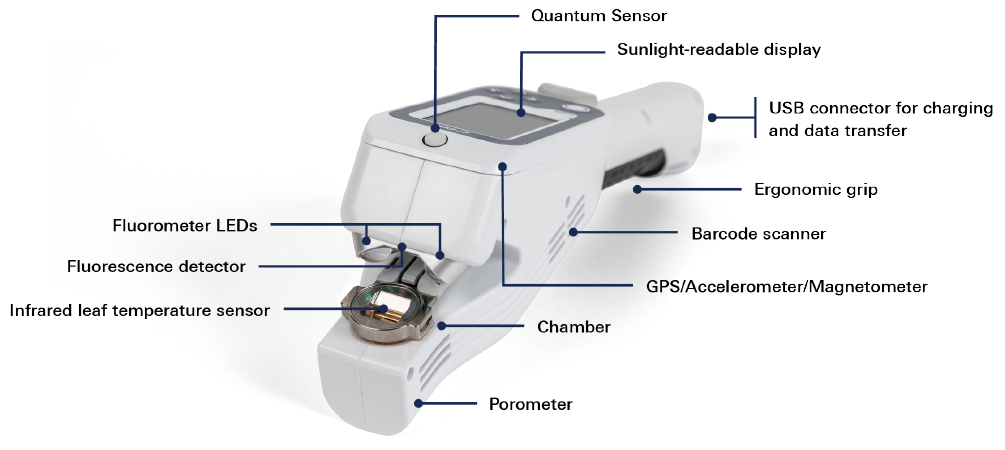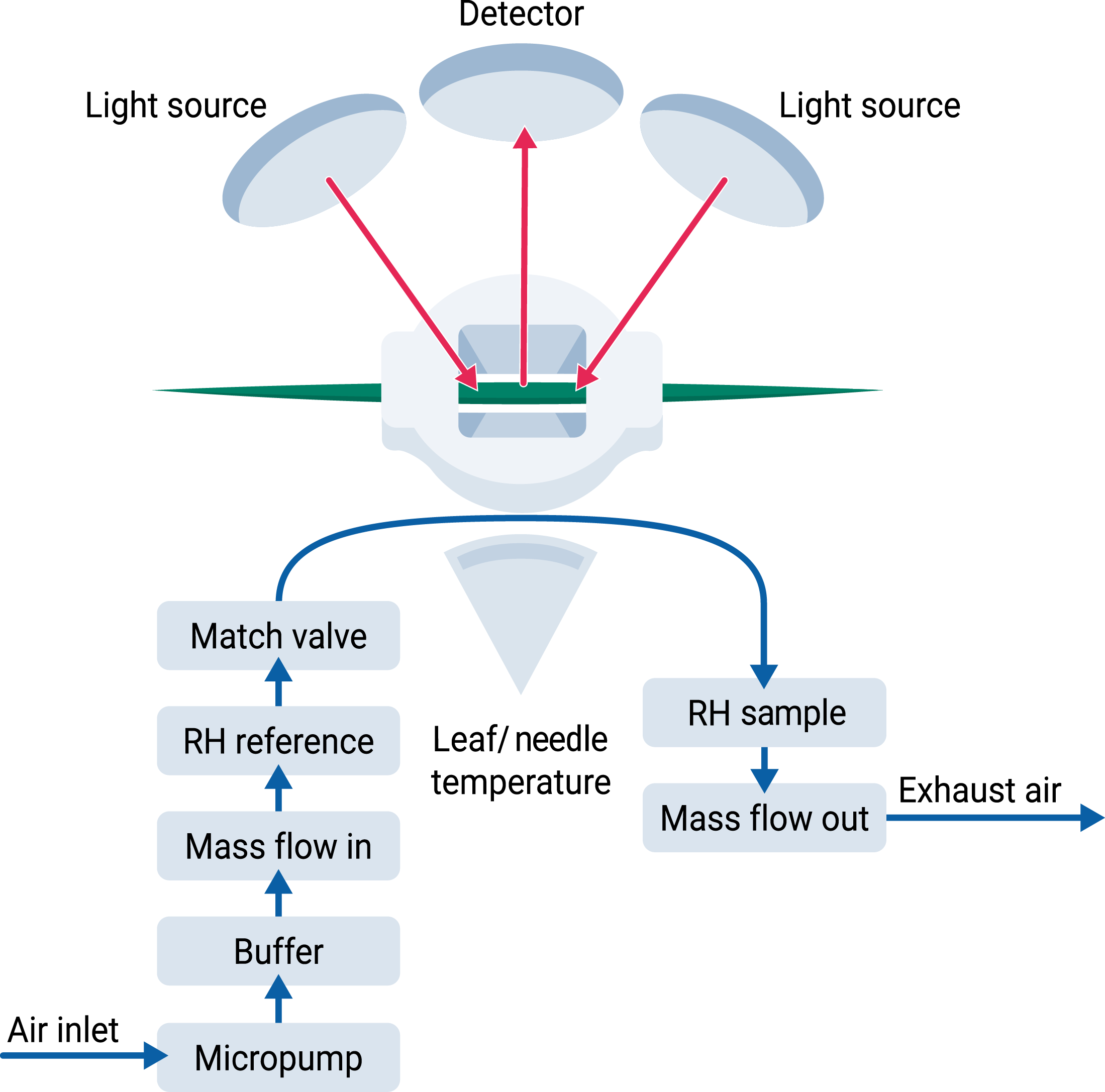NEW
LI-600N
Porometer/ Fluorometer
For needles, narrow leaves, and grasses
The LI-600N Porometer/ Fluorometer is the only instrument specifically optimized to measure the stomatal conductance and chlorophyll fluorescence of a single needle, narrow leaf, or blade of grass.
Get a QuoteLeaf sizes
Width: 1-3.5 mm
Length: minimum 14.2 mm
Thickness: maximum 2.8 mm


How it's different
The LI-600N is designed to quickly survey needles, narrow leaves, and grasses under ambient conditions.
- Reaches stability in 5-15 seconds across a range of gsw rates.
- Utilizes user-configurable stability criteria.
- Log a measurement with the press of a button.
How it works
The LI-600N brings together numerous innovative technologies to deliver fast, accurate, and dependable measurements in a compact, handheld device.
Stomatal conductance
The LI-600N uses an open flow-through differential measurement for quantifying transpiration (E) and stomatal conductance around the needle or narrow leaf. First, E is quantified by measuring the flow rate and water vapor mole fraction of air that enters and leaves the chamber. Meanwhile, total conductance to water vapor (gtw) is computed as a function of E and vapor pressure in the leaf and cuvette. Finally, stomatal conductance to water (gsw) is computed as a function of gtw and the boundary layer conductance to water vapor (gbw).
The advantages of the LI-600N measurement flow path include the following:
- Flow rates quickly flush through the small chamber volume and result in rapid stabilization for quick measurements
- A differential measurement in close to ambient conditions
- Minimally disturbed light, CO2, and H2O during the measurement eliminate the need for desiccant chambers or corrections for large diffusion gradients
- Automatic matching accounts for drift between the reference and sample sensors

High accuracy at low conductance
Get high-quality, accurate measurements from single needles and blades of grass, even at extremely low conductance.



Return to Overview
BackExperiences
Continue reading